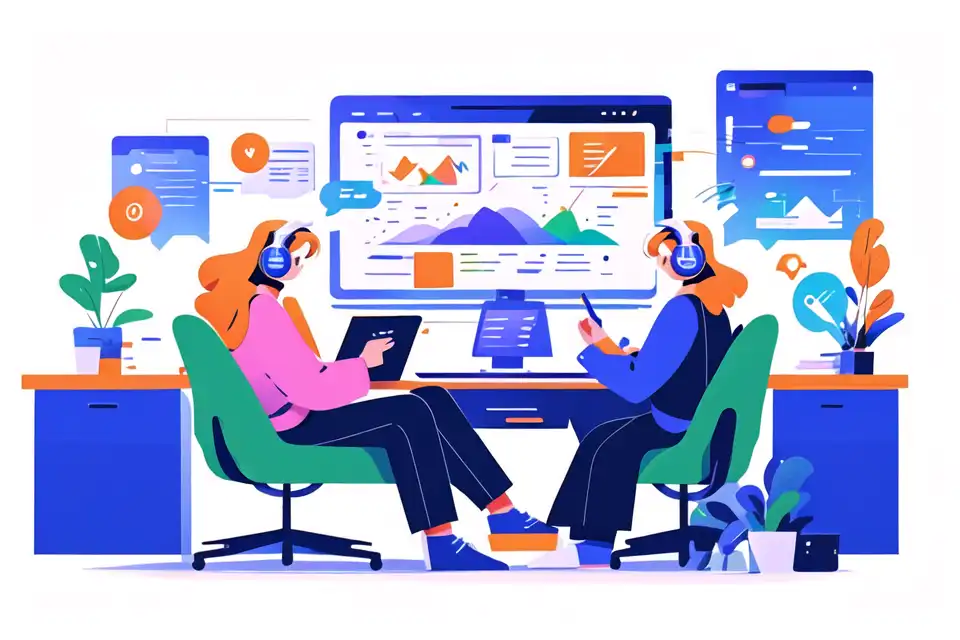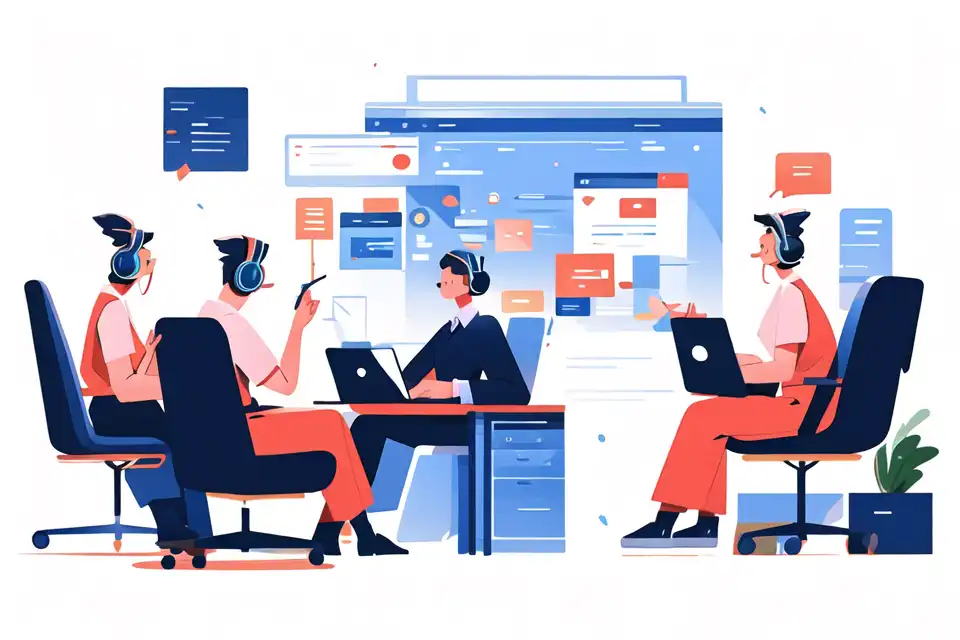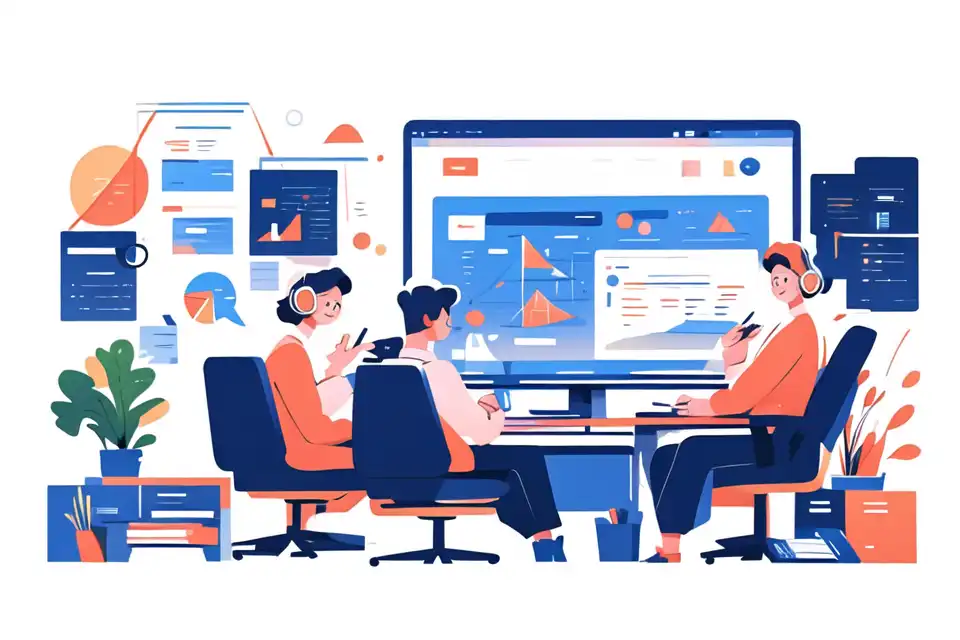Educational Ethics Simulations
Learn about the top tips and strategies in educational ethics simulations
Try Lark for Free
The educational landscape is undergoing a remarkable transformation, driven by technological advancements and innovative teaching methods. Amidst these changes, a new concept, educational ethics simulations, is gaining ground. This innovative teaching approach provides a platform for students to explore ethical dilemmas in a controlled, risk-free environment and develop essential skills such as critical thinking, decision-making, and conflict resolution. This article delves into the world of educational ethics simulations, exploring its emergence, significance, implementation, and impact on teaching and learning.
Unlock the power of Lark to elevate your business operations. Discover actionable strategies and best practices in our comprehensive guide.
The emergence of educational ethics simulations
The Evolution of Ethics Education
Traditionally, ethics education has mostly been theoretical, relying on case studies and classroom discussions. However, this approach often fails to engage students fully and lacks the experiential element necessary for effective learning. Responding to this shortcoming, educators have sought more practical, hands-on methods to teach ethics, leading to the emergence of educational ethics simulations.
The Rise of Simulations in Educational Ethics
Simulations, a technique commonly used in fields like medical training and aviation, have found their way into ethics education. Simulations present students with real-life scenarios that compel them to make ethical decisions, allowing them to experience the consequences of their choices in a safe setting. This experiential teaching method has been found to significantly enhance students' comprehension and retention of ethical concepts.
The significance of educational ethics simulations
Enhancing Ethical Understanding
One of the primary benefits of educational ethics simulations is their potential to enhance students' understanding of ethical theories and principles. By allowing students to apply these principles in simulated scenarios, these tools help them grasp complex ethical concepts more deeply.
Promoting Ethical Decision-Making Skills
Beyond understanding, ethics simulations also promote the development of ethical decision-making skills. As students engage with various ethical dilemmas, they learn to evaluate options, consider potential impacts, and make informed decisions. This hands-on learning experience is far more effective than traditional lecture-based ethics education.
Learn more about Lark can help you with everything mentioned so far in the article.
The impact of educational ethics simulations on teaching and learning
In Teachers' Perspective
From the teachers' perspective, ethics simulations provide a valuable tool for assessing students' understanding and ethical reasoning abilities. By observing students' actions and decisions during simulations, teachers can gain insights into their ethical maturity and identify areas for improvement.
In Students' Perspective
For students, ethics simulations offer a dynamic and engaging learning experience. These activities challenge their thinking, stimulate their curiosity, and provide opportunities for active learning. As a result, students are more motivated to learn and more likely to retain the knowledge gained.
The role of educational ethics simulations in student engagement and outcomes
Boosting Engagement through Interactive Learning
Educational ethics simulations are designed to be interactive, encouraging students to engage actively with the learning material. This high level of engagement boosts students' motivation and interest in ethics education, leading to better learning outcomes.
Improving Learning Outcomes through Hands-On Experience
By providing hands-on experience with ethical decision-making, simulations help students internalize ethical principles and apply them in their lives. This practical experience improves their ethical reasoning abilities and prepares them for real-life ethical dilemmas they may encounter in their personal and professional lives.
Learn more about Lark can help you with everything mentioned so far in the article.
Real-life success stories of educational ethics simulations
Case Study 1: Ethical Decision-Making in Business Education
A business school used an ethics simulation to teach students about ethical decision-making in corporate settings. The simulation presented students with a series of business scenarios involving ethical dilemmas. The results showed a significant improvement in students' ability to make ethical decisions, demonstrating the effectiveness of simulations in ethics education.
Case Study 2: Exploring Bioethics through Simulations
A university biology course used a bioethics simulation to explore ethical issues in biotechnology. The simulation allowed students to engage with complex bioethical dilemmas and make informed decisions. The university reported increased student engagement and enhanced understanding of bioethics as a result of the simulation.
Case Study 3: Simulating Ethical Dilemmas in Journalism
A journalism school used a simulation to expose students to ethical dilemmas in journalism. The simulation involved scenarios like conflicts of interest, biased reporting, and privacy breaches. Students reported a deeper understanding of journalistic ethics and improved decision-making skills after participating in the simulation.
Learn more about Lark can help you with everything mentioned so far in the article.
The challenges and solutions in adopting educational ethics simulations
Potential Obstacles in Implementing Ethics Simulations
While ethics simulations offer numerous benefits, implementing them can pose challenges. These may include lack of resources, resistance from students or teachers, and difficulties in integrating simulations into the existing curriculum.
Effective Strategies to Overcome These Challenges
Overcoming these challenges requires strategic planning and resource allocation. Schools can leverage platforms like Lark to access affordable and easy-to-use simulation tools. They can also provide training for teachers to prepare them for using simulations in their classrooms. Additionally, schools can engage students in the planning process to reduce resistance and increase buy-in.
Future trends and predictions in educational ethics simulations
Emerging Trends in Ethics Simulations
As technology advances, we can expect to see more sophisticated and immersive ethics simulations. For example, virtual reality (VR) and augmented reality (AR) technologies could be used to enhance the realism of simulations and provide a more immersive learning experience.
Predictions on the Future of Ethics Simulations in Education
Looking ahead, it's likely that ethics simulations will become a standard component of ethics education. As more schools recognize the benefits of this teaching method, we can expect to see widespread adoption of ethics simulations in classrooms worldwide.
Learn more about Lark can help you with everything mentioned so far in the article.
Do's and don'ts in implementing educational ethics simulations
| Do's | Don'ts |
|---|---|
| Do align simulations with your curriculum and learning objectives | Don't use simulations as a substitute for traditional teaching methods |
| Do prepare students for the simulation experience | Don't assume that all students will naturally engage with simulations |
| Do evaluate the effectiveness of simulations | Don't overlook the potential challenges in implementing simulations |
Learn more about Lark can help you with everything mentioned so far in the article.
Conclusion: embracing the power of educational ethics simulations
In conclusion, educational ethics simulations represent a powerful tool for enhancing ethics education. By providing a dynamic, interactive, and immersive learning experience, these simulations can significantly improve students' understanding of ethical principles and their ability to make ethical decisions. Despite the challenges involved, the benefits of ethics simulations make them a worthwhile investment for any educational institution. As we look to the future, it's clear that ethics simulations will play an increasingly important role in shaping the ethical leaders of tomorrow.
Unlock the power of Lark to elevate your business operations. Discover actionable strategies and best practices in our comprehensive guide.








